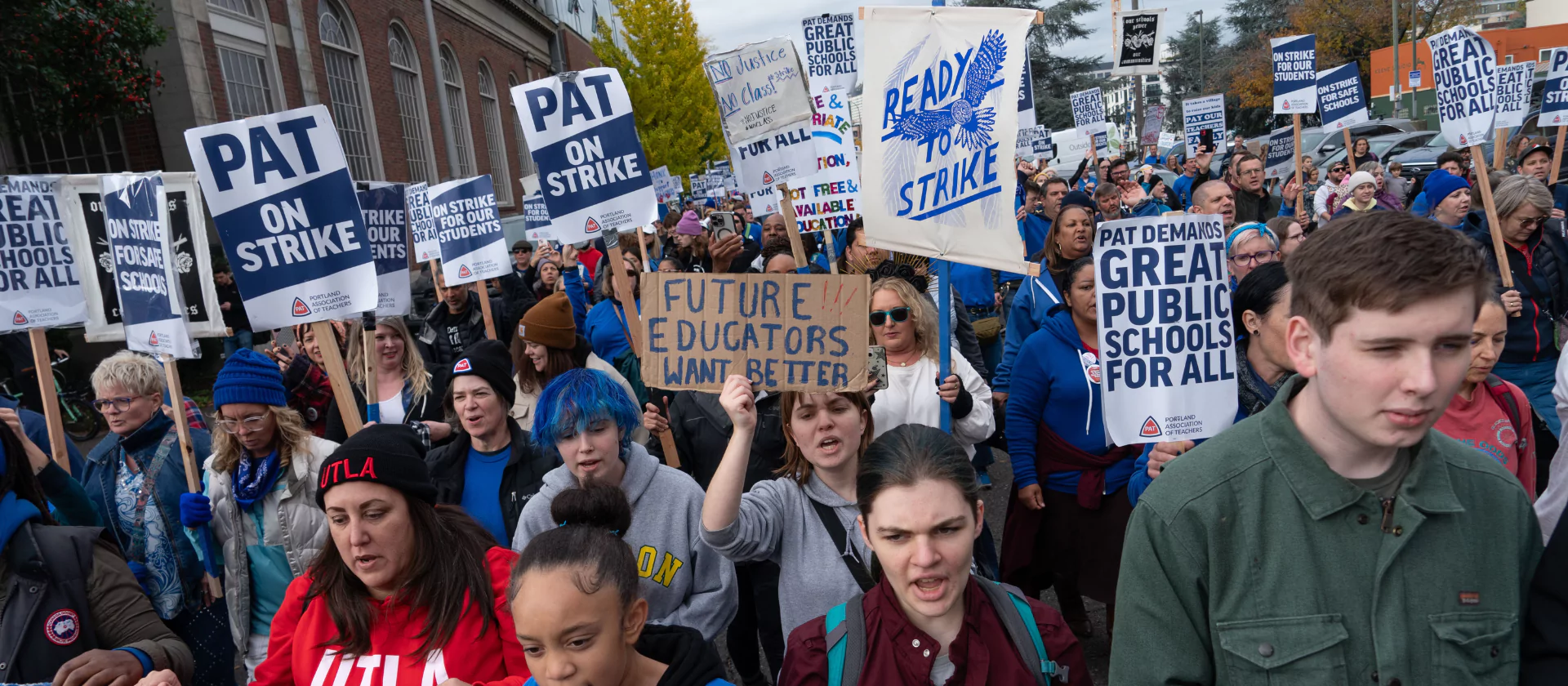When Enron stock tanked, employees lost over a billion dollars in the value of their retirement accounts. It isn’t just Enron. Thanks to other bookkeeping shenanigans and to the falling stock market employees with 401(k) plans have seen their nest eggs spoil.
In Oregon, according to a new report by the Institute for America’s Future, workers lost over $2.19 billion in retirement assets in 2000 and 2001 due to the stock market decline. Furthermore, Oregonians’ retirement plans will continue to be at heightened risk if Congress does not take steps to protect investors.
Unlike traditional “defined benefit” pensions, which pay a fixed amount upon retirement and are protected by the government, 401(k)’s and other “defined contribution” plans expose the employee to investment risk. The employee chooses where to invest her money, and the employer may choose how or whether to make a contribution to the employee’s fund.
Companies sweeten the pot by giving employees incentives for investing their 401(k)’s in company stock. For example, an employer may choose to match only dollars invested in company stock. This is why so many Enron employees lost so much when the scandal broke. It could have happened to anyone, from any company that encouraged employees to concentrate their investments this way.
The defined benefit pension rewarded longevity – employees leaving before a certain time might receive little or no benefit. The 401(k) and its ilk reflect a job market where employees change jobs frequently – when you leave, provided you’ve made the vesting period (often two years or less), you take it with you. They also cost less than the traditional pension because of reduced administrative burden and because the employee, not the employer, assumes the investment risk.
In the U.S. between 1983 and 1998, the percentage of full-time employees with a pension, who had only a “defined contribution” pension, grew from 15% to 59%. Given the popularity and advantages for employers of 401(k)’s, we aren’t likely to convince them to offer traditional pensions again. However, we can take steps to ensure that employee retirement funds are protected.
First, we need to prevent over-concentration of pension plans in a single, usually company, stock. Stockbrokers tell their clients to diversify; pensions should be no different.
Second, employees should have a seat on the investment boards that handle their money and should be able to hold executives accountable when they provide false information.
Third, companies should insure pension plans adequately. When Enron fell apart, employee pensions fell by $1.3 billion, but the insurance policy was worth only $55 million.
Finally, Congress should encourage more equity in treatment between highly paid employees and everyone else. According to the Institute for America’s Future, a company with a 401(k) plan can deny coverage to up to 30 percent of its lowest paid workers, those who need it most.
These reforms will not prevent losses from 401(k) investments, but they will go a long way to preventing the kind of large-scale wipeout that has happened to many in our current economic downturn.
The most important issue in pension reform is the fact that less than half of people in the U.S. (46 percent, 47 percent in Oregon) even have pension coverage. That means a majority will rely primarily on Social Security or personal savings in retirement, provided they can afford to retire at all.






